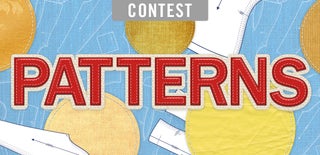Introduction: Designing an Enclosure for the MediaTek LinkIt One Board
I wanted to make a simple, sturdy, and minimal enclosure for the LinkIt. I made this one using a laser cutter and ~1/8" material (acrylic, plywood, cardboard, etc would all work). I suppose if you were super careful, you might be able to do this with an exacto knife though.
PCB dimensions are ~3.3 x 2.1 inches
Attachments
Step 1: Designing in Illustrator (and Making Mistakes)
I wanted this to be able to friction fit together and be nice and sturdy. I used Makercase to generate the side walls, but I wanted the top and bottom to have holes for finger joints to be able to fit into, so I did edits in Illustrator.
Probably easiest to follow along with the images above, but a quick summary:
- First I made a box the size of the PCB in Illustrator so I could see how it would fit into the case. Then I made a box that would be able to fit the board and leave extra room for the walls to be able to fit into, 2.75"x4".
- Then, I made a box on makercase that was slightly smaller than 2.75x4 at 2.5x3.75. Download case plans
- Make another rectangle that is 2.5x3.75 and place it in the center of one of the pieces.
- Copy two of the walls from Makercase into Illustrator and line them up along the 2.5x3.5 rectangle as if you unfolded the box. Select all and Command/ctrl+5 to make guides.
- draw a guide rectangle in the space the walls will fit into.
- Hide layers that are distracting, you only need the guide rectangles and the walls.
- On a new layer, use the anchor points of the guides to draw the holes.
- I drew two sides, then selected that layer, command/ctrl+g to make a group, duplicated the group, rotated 180 degrees and aligned the guides.
- Next, I started drawing where to put holes for the various ports. I brought in an image of the link it and scaled it to size so that I could draw roughly where to put the holes.
- Bring in the other sides, duplicate the bottom board.
- Delete extra guide layers.
- Color/make stroke width according to your laser cutter, for me I need RGB colors and 0.072 pt lines.
Step 2: Laser Cut/Fixing Mistakes
I drew parts of the box incorrectly: the holes for the finger joints on the side were drawn in the wrong parts and some of the parts were flipped because I was drawing based on the top of the box even though I wanted the parts to be aligned to the bottom. It would have been okay, but the bamboo plywood I was using looks a lot better on one side than the other.
Lesson learned: I should use a practice material like cardboard before trying my final material.
The fixed file is attached at the top. It friction fits pretty well, so no glue or hardware is necessary.

Participated in the
Tech Contest

Participated in the
Patterns Contest














